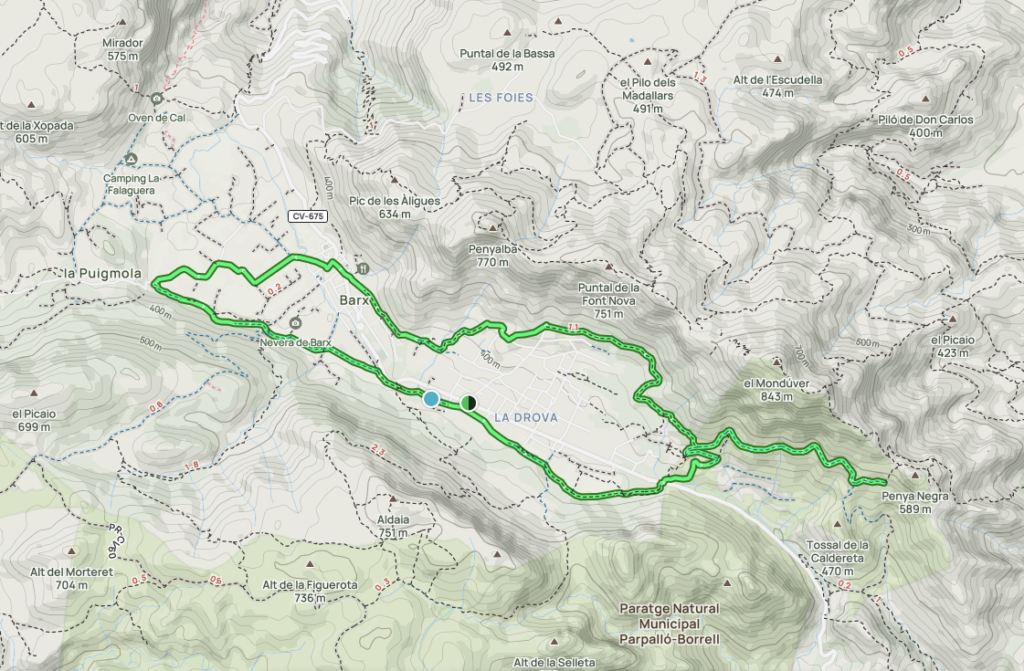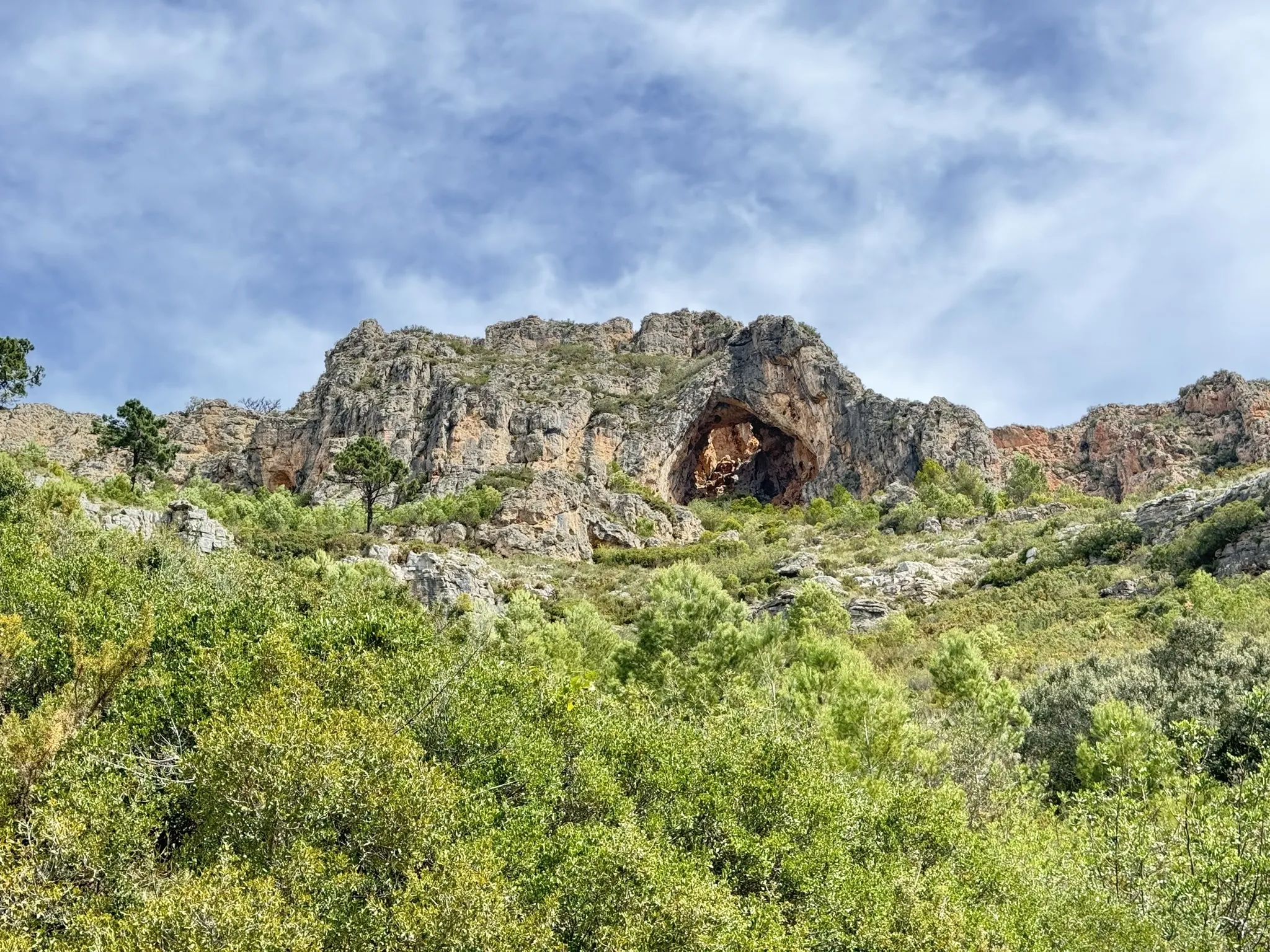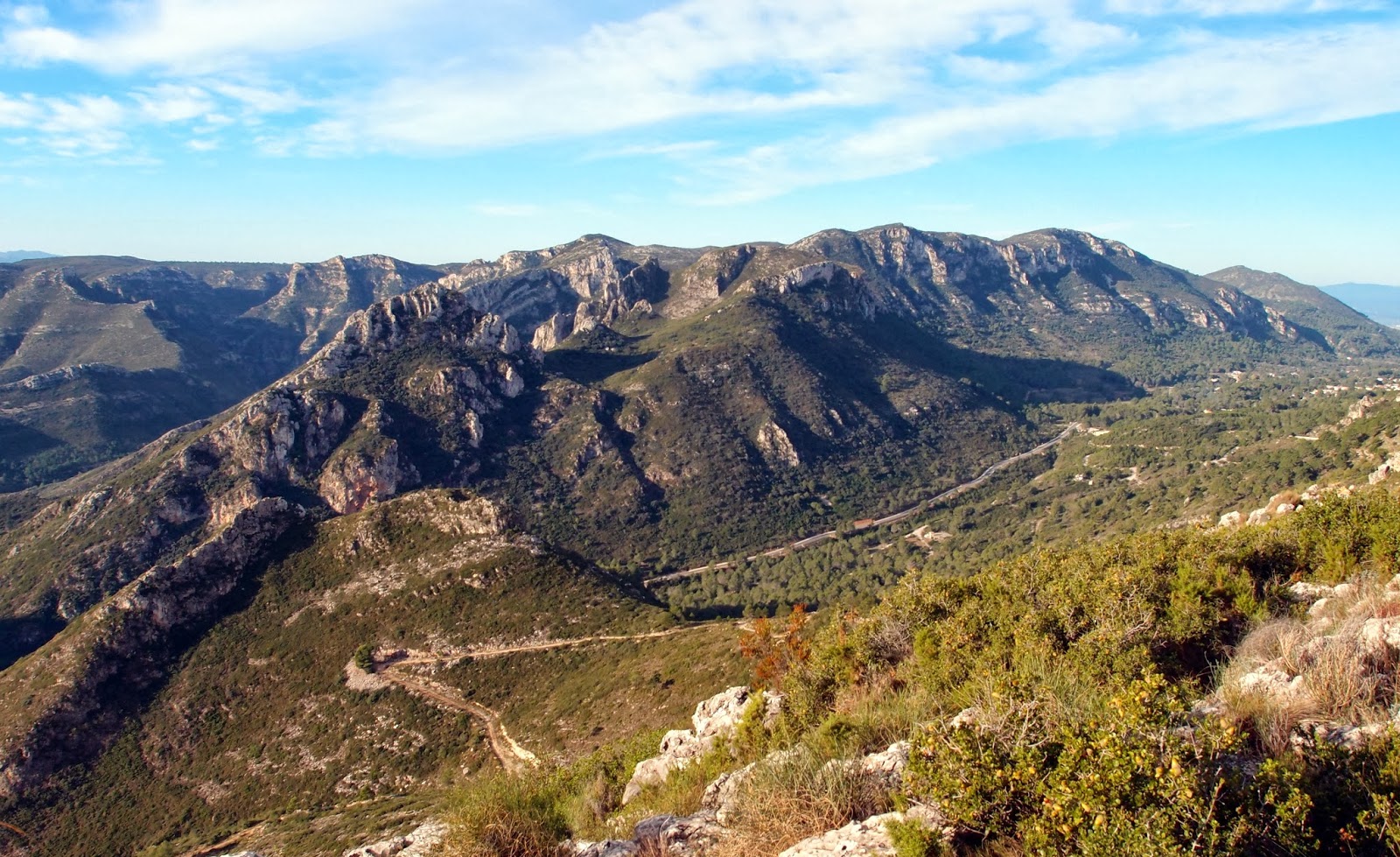Overview
Length: 15.5km
Elevation: 400m
Type: Loop + out-and-back
Time: 1hr 50m
Introduction
When Davíd, our new hire, invited us to his niece’s “comunión” in Barx, Valencia, we couldn’t say no. His family is from the area, and his sister still lives there, so it was a big deal for them.
Markus and I were a little embarrassed to admit that neither of us had ever taken communion. But we knew how important this Spanish coming-of-age ceremony is. It felt like a perfect chance to get a deeper understanding of the traditions—and also to practice our Spanish after our lessons in Barcelona!
Of course, we couldn’t resist planning a little running while we were there…
When we asked Davíd for a recommendation, he pointed us straight to the Penya Negra—a short but sharp hilltop standing at 589m above the Valle de Drova and spectacular views over the La Safor coastline.
We tackled the route that morning, and thank goodness we did, because by the time the ceremony and feast were over, we’d been hit with some viciously strong shots of Valencian “cassalla”. Markus, naturally, didn’t have the strength to say no and ended up napping it off in the car before we headed home!
All in all, it was an unforgettable day—equal parts cultural insight, adventure, and cassalla-induced chaos!
About Barx
Barx, or Bárig in Castellano Spanish, is a gorgeous small town nestled between the mountains of Buixarró and Mondúver. It’s far removed from the bustling coastal towns like Gandía, Oliva, or the popular Marina Alta region further south.
But driving into the valley feels like stepping into another world. Just a short distance from the sea and city, the landscape moves dramatically into something hidden and almost untouched—green hills, rugged peaks, and a sense of peace you rarely find so close to civilization.
It’s one of those “Oh my word how have we never come here before?” moments.
Barx itself is small but rich in character. The Cueva del Parpalló is a Bien de Interés Cultural (site of cultural heritage) an archaeological site of immense historical significance. It’s one of Europe’s most important paleolithic sites with almost thousands of examples of cave painting as well as hundreds of tools.
For those seeking a peaceful retreat in a natural paradise, Barx is a hidden gem, quietly holding its own amidst the more famous destinations nearby.
The Trail Running Route
We followed a 13.5km route we found on AllTrails, which loops around the Valle de la Drova going through Barx and through the Paratge Natural Municipal el Surar with a mix of trails: paved roads, trails and residential paths.
Of course, Markus couldn’t resist adding a short but difficult climb to the summit of Penya Negra, which isn’t part of the standard route. It was only 100m extra in elevation but turned out to be the highlight of the day!
We started at the Font de la Drova, with the Mondúver mountain to our left, unmistakable with its antennae on the summit. As the trail climbed gently out of the valley, we passed the Font del Parpalló, a spring that was unfortunately dry when we visited, and soon after arrived at the Cova de Parpalló. The cave is protected by a fence (probably for the best) but the view from a distance is still absolutely stunning.
Continuing uphill, the views opened up spectacularly.
From the Coll de la Rafaela, we paused at the Mirador Coll de la Rafaela in between the peaks of Mondúver and Penya Negra, where the vistas stretched across the La Safor coast and beyond to the Gulf of Valencia.
From here, we veered off the main trail to climb the Penya Negra. It’s a small mountain next to the imposing Mondúver, but don’t let its size fool you. We tackled it from the north and quickly the path became faint and overgrown. We were scratched to bits but the climb was worth it. The summit has jaw-dropping views, stretching from Montgó to the north, across the fertile valleys below, to the distant coastline.
We descended the southern side, which was more accessible, looping back to rejoin the main trail at the Coll de Rafaela.
From the Cueva de Parpalló, instead of heading straight back to La Drova, we turned right to skirt the northern side of the Valle de la Drova. This detour took us past the outskirts of Barx before climbing gently towards La Puigmola. From there, the trail looped back to La Drova, completing a fantastic circuit of the valley.
This route was a mix of everything—history, challenge and spectacular scenery.
Adding the Penya Negra summit made it extra special and a must-do for anyone looking to combine trail running with a touch of adventure. If you’re feeling up for an extra challenge we met a couple about to tackle the Mondúver mountain. It’s a simple addition as at the Coll de la Rafaela you just go north instead of south.
At 843m you’ll have to climb up almost 400m of elevation gain—but the views will be worth it!

AllTrails.com route

The Cova del Parpalló.

View south from the peak of the Penya Negra with Montgó in the distance.

View north over the Valle de la Drova, and the road entering Barx.
